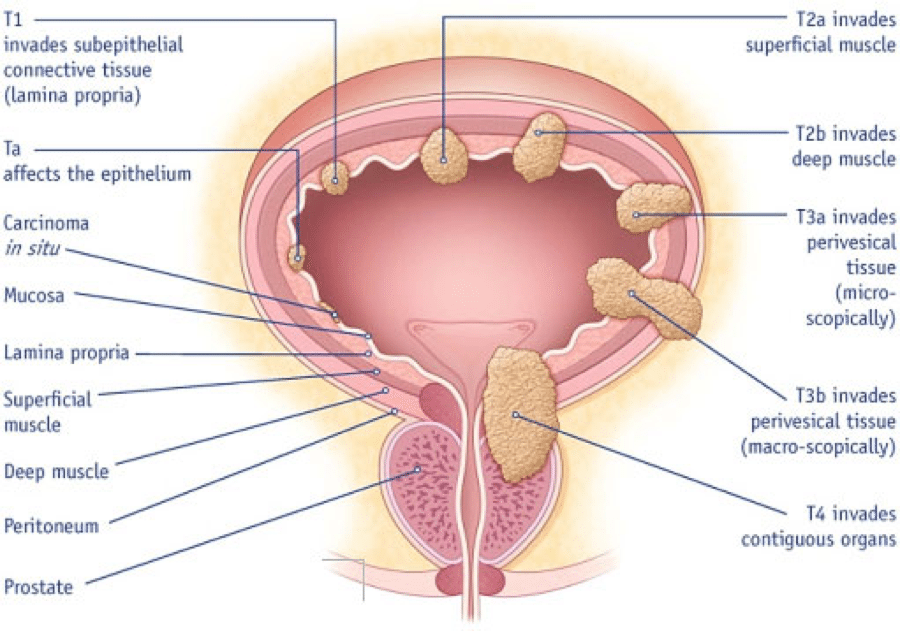Bladder Cancer
Bladder cancer occurs in approximately 80,000 Americans per year. More men will develop new cases of bladder cancer than women by a 3-to-1 ratio. Bladder cancer is a serious condition and leads to approximately 17,000 deaths per year.

Signs of bladder cancer usually involves:
- Blood in the urine (visible or microscopic)
- Irritative voiding symptoms – dysuria, frequency, urgency
- Passage of tissue or clots in the urine
- Pelvic and / or back pain
Bladder Cancer Treatment
When bladder cancer is discovered in its’ early stage, it can be managed with an endoscopic procedure (transurethral resection of bladder tumor – TURBT). However, due to the high risk of recurrence, regular cystoscopies are required to monitor for the return of bladder cancer.
In addition to the use of endoscopy to remove bladder tumor, it is not uncommon for an individual to also receive routine bladder instillation of chemotherapy or biologically-active solution such as BCG (Bacille-Calmette-Guerin) into the bladder.
For more advances stages of bladder cancer, patients may have to undergo extensive surgery to remove their bladder and / or received chemotherapy as well as radiation therapy.
If the bladder is removed the urine is redirected into a segment of bowel. The bowel may either be brought directly to the surface of the abdomen and drain into a urostomy bag or it can be reshaped into a reservoir and reattach to the urethra or a narrowed stoma for the individual to catheterize.
